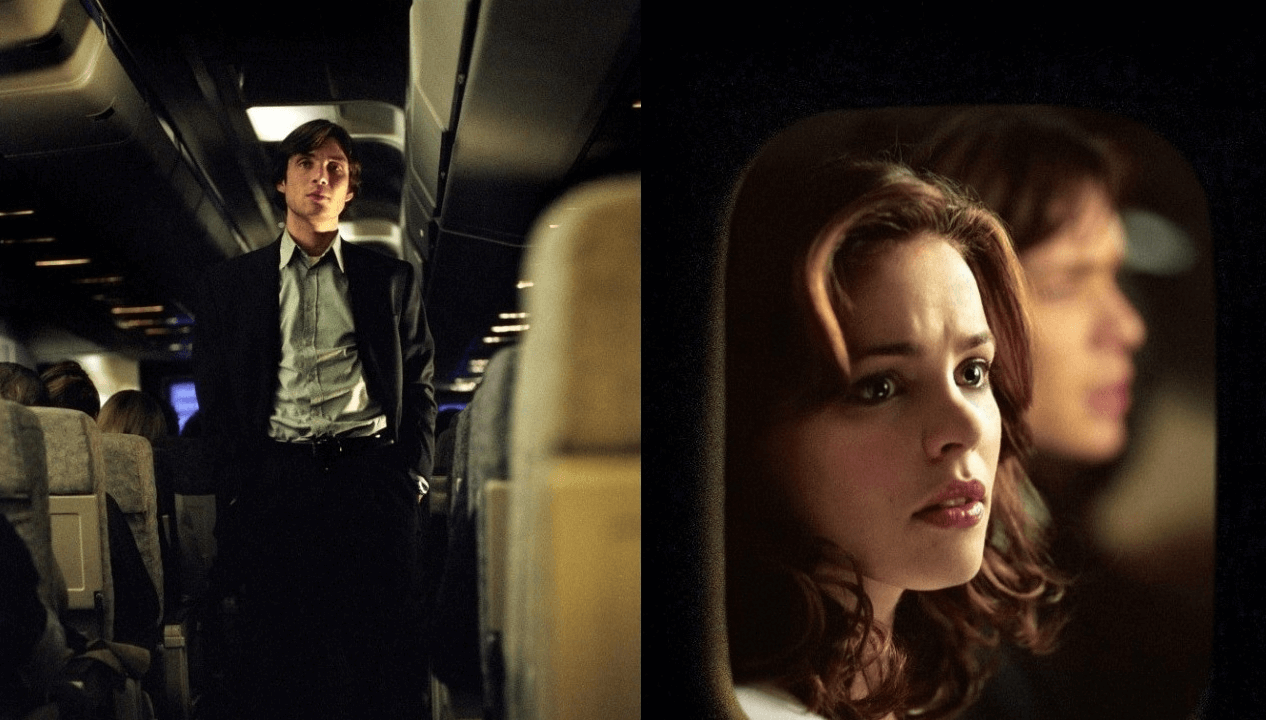Red Eye [2005] is often obscured by the looming shadow of horror master Wes Craven’s legacy but holds its own as a solid thriller devoid of the director’s preferred aesthetic of blood, gore, and retractable knives. Rachel McAdams plays hotel manager Lisa Reisert who boards a red-eye flight to Miami, unbeknownst to the fact that the man she is seated next to [Cillian Murphy] is a terrorist bent on using her for his impending assassination scheme.
The Everyman with a Plan: The imposing figure of this film is a mysterious passenger by the name of Jackson, who first introduces himself to Lisa in the airport as an unassuming man with possibly amorous intentions. It is within minutes of them seated together on the plane that the plot shifts from a would-be situational romantic comedy to a conspiracy-induced drama, subtly initiated by Murphy’s streamline acting. Contrary to the monstrous antagonists in Craven’s other films, Jackson steps into the scene with no dramatic build-up or high-pitched musical cue, but rather, manages to integrate himself into the background just enough without raising suspicions of what his real intentions are. An aura of natural uneasiness, however, is perpetuated through Murphy’s steely-eyed glare and peculiarly calculated mannerisms, demonstrating the actor’s excellent portrayal of a character that can turn a complete 180 at any moment. Cillian Murphy is not a dream stalker or a masked slasher with a proclivity for teenage screams, but he is always there, always visible; his face never concealed but instead constantly illuminated by the overhead lights of the jetliner, eerily expressionless as he stares in contemplation of his plan.
Care If I Die?: Red Eye is strongly reliant on the chemistry between its two leading characters, which for the most part, successfully mimics the dynamic of predator and prey. Their relationship neatly evolves from one of fluttering sexual tension to utter repulsion and fear. Rachel McAdams gives a convincing performance as the typical, feeble-minded heroine faced with the daunting task of thwarting her captor. It’s unfortunate that the extent of her persona can be summarized as just that. The character of Lisa is flatly molded into a complacent role for the plot to unravel, probably meant to come off as a Hitchcockian ingenue with a bit of fight in her, but instead only resembles the traits of a Lifetime leading lady. The motivations and backstory of McAdams’ character are also needlessly shoehorned in a way that doesn’t add dimensionality to her situation. Regardless of these issues, it is by no fault of McAdams’ acting, who still manages to come off as likable and make the audience want to root for her in the end.
Schmucks on a Plane: It’s not an unusual occurrence when Wes Craven interjects elements of comedy into his movies. In fact, his brand of self-referential, precocious humor is what credited him with revitalizing the horror genre in the ‘90s. In the case of Red Eye, the suppliers of the snappy dialogue are the side characters aboard the plane and Lisa’s inexperienced co-worker from the hotel where the assassination is to take place. While not completely debilitating to the film, there are times when certain lines come off as awkward and ill-placed. Despite those instances, the interactions between the passengers and Murphy’s character are entertaining, to say the least, especially with the knowledge that he can easily dispose of any Dr. Phil-loving grandmas who pester him if he so chooses.
Suspense in the Sky: Possessing all the demarcations of an engaging thriller and bouts of fast-paced action sequences, Red Eye is a captivating departure from the supernatural-based horror on which Craven has cemented his reputation. The cramped setting of a two-seat airplane aisle is only punctuated by the growing hostility between Lisa and Jackson as she struggles to obey his commands while trying to seek help. It soon becomes a race against time as the final showdown takes place once both characters are off the plane, culminating in a skillfully shot sequence employing unique cinematography. One setback is an anti-climactic conclusion that doesn’t quite deliver when compared to the previous thrills experienced in the air but nonetheless, wraps up the film and packages it as a standardly formulaic addition to the suspense genre.
Red Eye is an interesting change of pace for Wes Craven, as he grounds his characters in a reality riddled with underlying conspiracy and mystery, showcasing the potential he had to craft other genre installments with more polished ingenuity.

